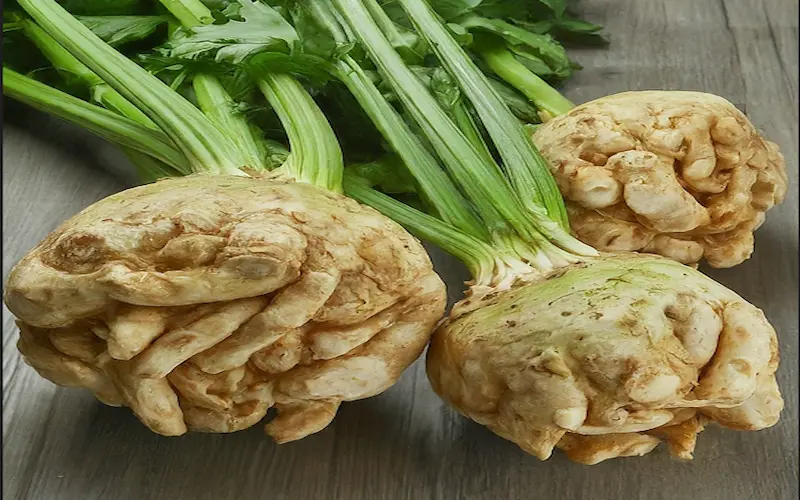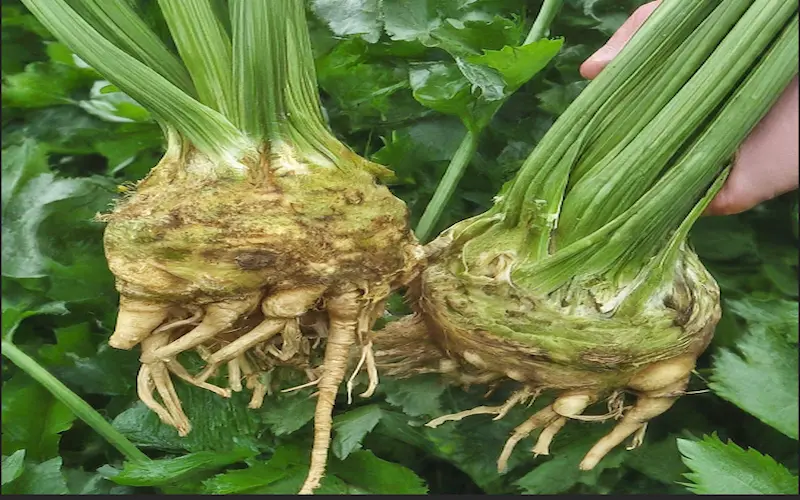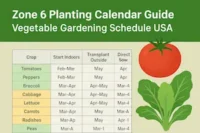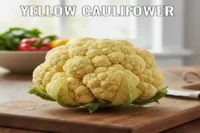What is Celeriac Root: A Comprehensive Guide on How to Grow
Published: 2 May 2024
What is Celeriac
Celeriac, also known as celery root, is a vegetable that is often overshadowed by its more commonly known relative, the celery stalk. However, this root vegetable deserves a spotlight of its own for its unique flavour and versatility in the kitchen. Celeriac is a type of celery, scientifically known as Apium graveolens var. rapaceum, cultivated for its edible roots rather than stalks. As a cool-weather crop, it is typically planted in early spring or late summer and harvested in the fall or early winter.
Celeriac is quite hardy and can thrive in a home garden when given the right conditions. In this guide, I’ll walk you through everything you need about celeriac, from its benefits to how to grow it successfully in your garden or pot.

Understanding the Benefits of Growing Celeriac Root
Growing celeriac in your garden has numerous benefits. First and foremost, this vegetable offers a host of nutritional advantages. Celeriac is low in calories but high in dietary fibre, making it excellent for digestive health. It’s also rich in vitamin K, crucial for bone health, and contains a good mix of other essential vitamins and minerals, such as vitamin C, phosphorus, and potassium.
From a culinary standpoint, celeriac is incredibly versatile. It can be eaten raw or cooked, and its distinct taste enhances various dishes. By growing celeriac at home, you’ll have fresh access to a vegetable that is often hard to find in grocery stores.
Growing celeriac is also beneficial for the garden ecosystem. Its long growing season means its leaves provide a steady canopy, which can help suppress weeds. Like other root vegetables, celeriac can help break up the soil, improving its structure for different plants. And let’s remember the satisfaction that comes from growing your food. There’s a particular joy in nurturing a plant from seed to harvest and knowing that the delicious result is the product of your hard work.
Choosing the Right Location and Soil for Growing Celeriac
The success of your celeriac crop starts with choosing the right location and soil conditions. Celeriac thrives in full sun but can tolerate partial shade. Selecting a spot in your garden that receives at least six hours of sunlight daily is essential. Adequate light is necessary for the development of the plant’s roots.
Soil quality is equally significant. Celeriac prefers rich, well-draining soil with a pH between 5.8 and 6.8. Before planting, it’s a good idea to work in plenty of organic matter, such as compost or well-rotted manure, to provide the nutrients the plants need. The soil should also retain moisture well, as celeriac requires a consistent supply of water throughout its growing season.
Good soil structure is essential for celeriac. If the roots encounter resistance in the soil, they can become misshapen or stunted. Therefore, ensure the soil is loose and free of stones or hard clumps that might impede the roots’ growth. Preparing the soil correctly at the beginning of the season will save you a lot of trouble down the line.
Step-by-Step Guide on How to Grow Celeriac in a Pot
Getting Started with Pots and Seeds
Growing celeriac in a pot is an excellent option if you’re short on space or want the flexibility to move your plants around. To begin, choose a pot that is at least 12 inches deep and equally wide to accommodate the growth of the celeriac root. Make sure the pot has adequate drainage holes to prevent waterlogging.
Fill the pot with a mix of potting soil and compost, ensuring a rich, fertile environment for your celeriac. Sow the celeriac seeds on the surface and lightly dust them with a thin layer of soil or vermiculite. The seeds need light to germinate, so don’t bury them too deeply.

Caring for Celeriac Seedlings
Celeriac seeds can germinate for up to three weeks, so patience is vital. Keep the soil moist but not waterlogged, and maintain a stable temperature around 70°F (21°C). Once the seedlings emerge, ensure they receive plenty of light to prevent them from becoming leggy.
As the seedlings grow, thin them out to prevent overcrowding. You want to leave the most robust plant in each pot. Continue to water consistently, and consider feeding with a half-strength liquid fertilizer every couple of weeks to encourage vigorous growth.
Transplanting and Ongoing Care
If you started your celeriac indoors or in a small pot, you must transplant it into a larger pot once it has several sets of true leaves. Be gentle during this process to avoid damaging the delicate roots. After transplanting, continue to care for your celeriac by watering regularly, especially during dry spells, as the plant requires a steady supply of moisture.
Mulching around the base of the plant can help retain moisture and suppress weeds. As the growing season progresses, you may need to stake the plants if they become top-heavy. Watch for pests and diseases and address any issues promptly to ensure a healthy crop.
Essential Tips for Successful Celeriac Cultivation
The Importance of Watering and Mulching
Celeriac has a deep root system that needs constant moisture to develop correctly. Watering is especially critical during dry periods. However, be careful not to overwater, as this can lead to root rot. A good rule of thumb is to water deeply when the top inch of soil feels dry to the touch.
Mulching is another critical practice in celeriac cultivation. A layer of organic mulch, such as straw or grass clippings, will help maintain soil moisture, regulate temperature, and reduce the growth of competitive weeds. Replenish the mulch as needed throughout the growing season.
Feeding Your Celeriac
Celeriac is a heavy feeder, meaning it requires a good amount of nutrients to grow well. Incorporate a balanced granular fertilizer into the soil at planting time, and consider side-dressing with compost or a high-potassium liquid fertilizer during the growing season to encourage strong root development.
Thinning and Spacing
Proper thinning and spacing are crucial for celeriac. If you’re growing celeriac directly in the ground, thin the seedlings to about 6 to 9 inches apart once they are large enough to handle. This spacing gives each plant enough room to grow and ensures adequate air circulation, which helps prevent fungal diseases.
Common Problems and How to Troubleshoot Them
Pest Infestations
Celeriacs can be susceptible to the same pests that plague celery, such as aphids and carrot root flies. Monitor your plants regularly and use organic methods like neem oil or insecticidal soap to control infestations. Encouraging beneficial insects, such as ladybugs and lacewings, is also an effective way to keep pest populations in check.
Disease Prevention
Root rot and other fungal diseases can be a concern, particularly in wet conditions. Good garden hygiene, crop rotation, and proper watering practices can help prevent these issues. Remove and destroy affected plants to prevent the spread if you spot signs of disease.
Bolting
Bolting, or premature flowering, can occur if celeriac is exposed to stress, such as fluctuating temperatures or drought. To prevent bolting, keep the growing conditions as consistent as possible and ensure the plants receive adequate water and nutrients.
Harvesting and Storing Celeriac
When to Harvest
Knowing when to harvest celeriac can be tricky, as the roots develop underground. Typically, celeriac is ready to harvest when the roots are about the size of a large potato, usually around 100 to 120 days after planting. You can start to check the size of the roots by gently uncovering the top of the soil around the base of the plant.

How to Harvest
To harvest celeriac:
- Use a garden fork to loosen the soil around the root gently.
- Carefully lift the plant out of the ground, not damaging the root.
- Shake off any excess soil and trim off the leafy tops.
Storing Celeriac
Celeriac can be stored for several months if kept in the right conditions. Cut off the foliage and store the roots in a cool, dark place like a root cellar or an unheated garage, where temperatures remain just above freezing. The origins can be packed in damp sand or peat to help retain moisture and prevent shrivelling.
Delicious Recipes and Dishes Using Celeriac
Celeriac might not win beauty contests, but it shines in the kitchen. This versatile root can be roasted, mashed, pureed into soups, or eaten raw. One of my favourite ways to enjoy celeriac is in a classic French remoulade, where it’s julienned and tossed with a tangy mustard dressing. It’s a delightful alternative to coleslaw and a great way to introduce this vegetable to sceptical diners.
Another delicious option is to make a creamy celeriac soup. The root’s subtle flavours are enhanced when simmered with aromatics like onion and garlic, then blended until smooth and enriched with a splash of cream. It’s a warming dish that’s perfect for chilly evenings.
For a heartier meal, consider celeriac mash. Boil the root until tender, then mash it with butter, cream, and seasoning. This mash pairs wonderfully with roasted meats and provides a flavorful twist on traditional mashed potatoes.
Exploring Other Methods of Growing Celeriac
Other methods to explore besides growing celeriac in the ground or pots exist. Raised beds can be an excellent option for those with poor soil, as they allow for better control over the growing medium. Similarly, hydroponic systems are becoming increasingly popular for growing root vegetables, including celeriac, though this method requires more specialized knowledge and equipment.
For those interested in sustainable practices, permaculture gardens can incorporate celeriac into a diverse planting scheme. Companion planting with celeriac can also be beneficial; for example, planting it alongside tomatoes can help naturally deter pests.
Conclusion: Unleash the Potential of Celeriac in Your Garden
Celeriac may not be the most common vegetable in the garden, but its unique flavour and versatility make it a hidden gem worth discovering. By following this comprehensive guide on growing celeriac, you can enjoy the rewards of this delicious root vegetable right from your backyard.
Remember, the key to successful celeriac cultivation is proper soil preparation, consistent watering, and careful pest and disease management.

- Be Respectful
- Stay Relevant
- Stay Positive
- True Feedback
- Encourage Discussion
- Avoid Spamming
- No Fake News
- Don't Copy-Paste
- No Personal Attacks



- Be Respectful
- Stay Relevant
- Stay Positive
- True Feedback
- Encourage Discussion
- Avoid Spamming
- No Fake News
- Don't Copy-Paste
- No Personal Attacks



